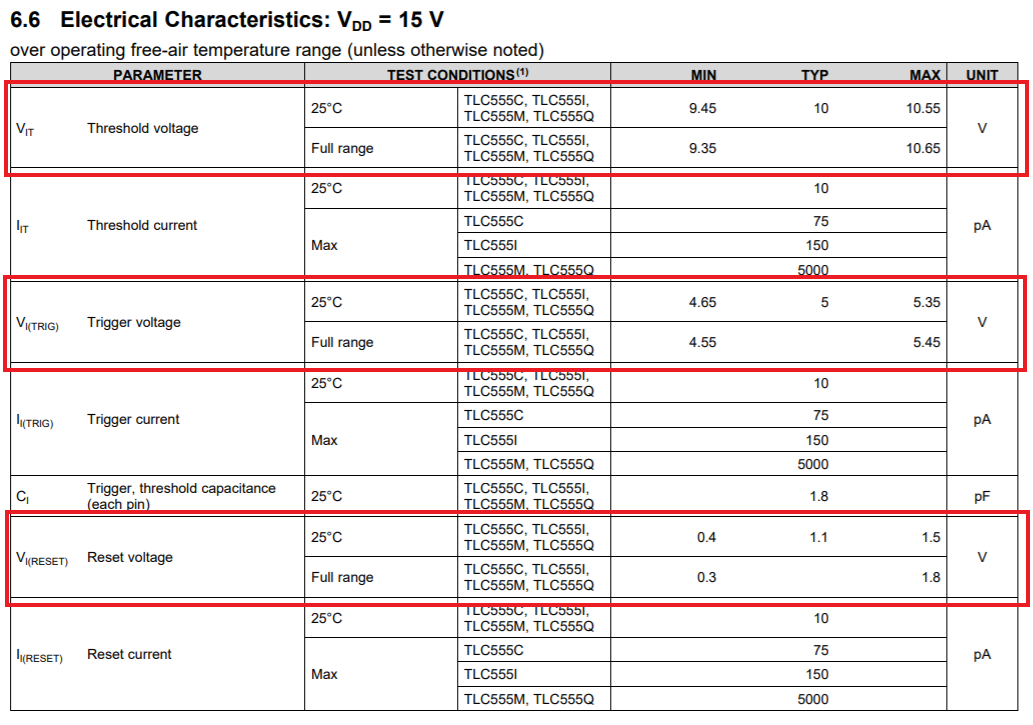Other Parts Discussed in Thread: TINA-TI
Hi Team
My customer is using TLC555 and he has three following questions.
Could you kindly help with this? Thanks.
1. How to calculate current flow through transistor when timing capacitor is discharging?
The customer wants to confirm current de-rating of transistor when discharging.
2. The tolerance of trigger level and threshold level (The tolerance of R is also fine)
The customer wants to confirm the setting time tolerance and the max. voltage that timer start to work.
I found the sentence below from the datasheet so I think the tolerance would be very small, please let me know if there's a specific value for it. Thanks.
"The resistance of “R" resistors vary with VDD and temperature. The resistors match each other very well across VDD and temperature for a temperature stable control voltage ratio."
3. Is there restriction for min. width of pulse that input to trigger pin when using as one-shot timer?
Thanks.


